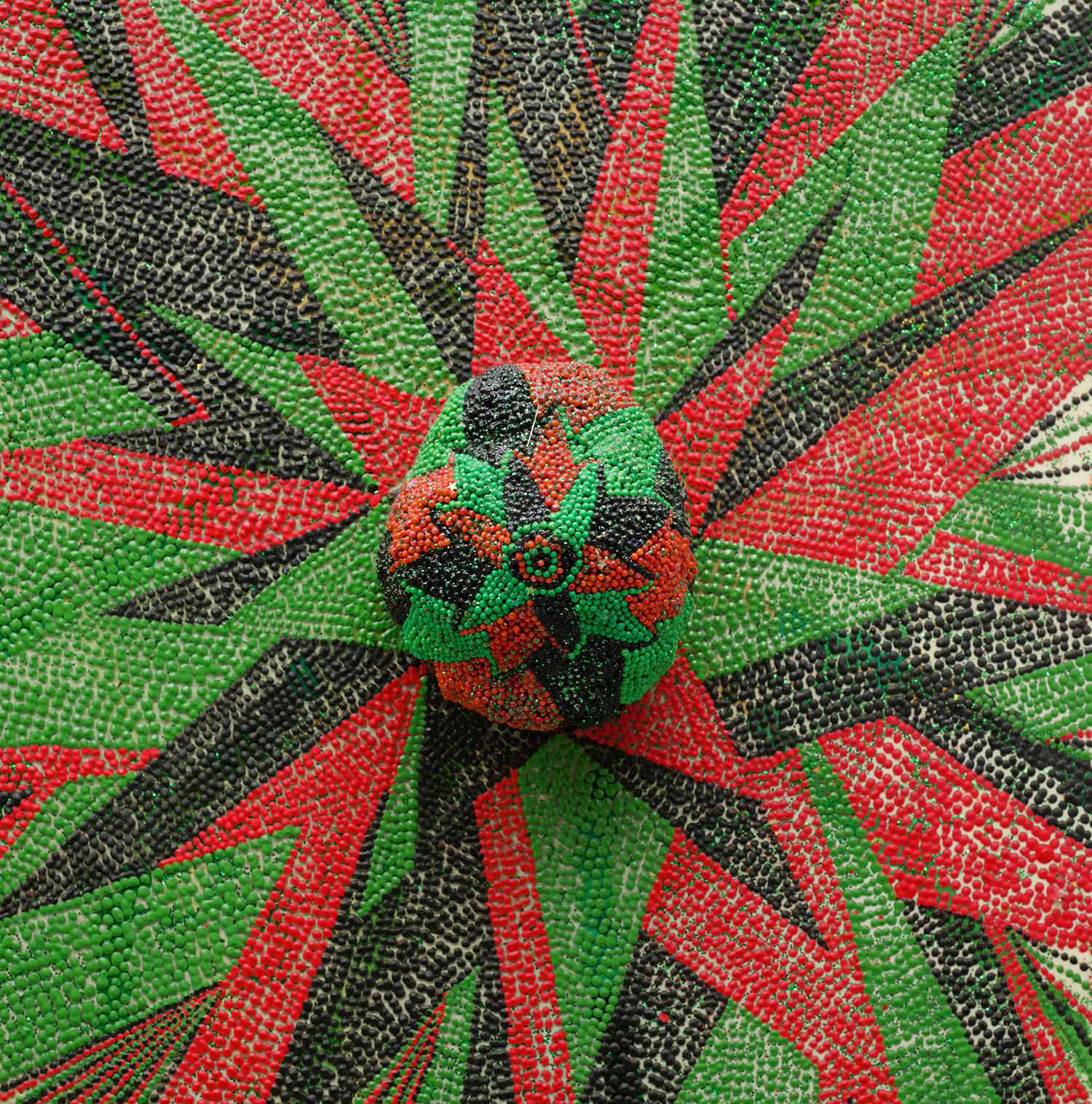





Property from an Important American Collection
27
Chris Ofili
Triple Beam Dreamer
signed, titled and dated '''Triple beam dreamer'' 2001-2002 CHRIS OFILI' on the overlap
acrylic, oil, leaves, glitter, polyester resin, map pins and elephant dung on linen, with two elephant dung supports
195.3 x 304.8 cm (76 7/8 x 120 in.)
Executed in 2001-2002.